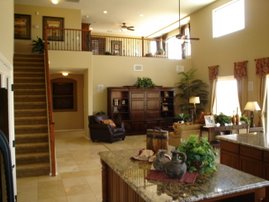I've researched Real Estate cycles, trends, and related data for a number of years. It's fascinating to uncover the anatomy of real estate and expose what makes it tick. While doing a little research on trends, I found some interesting figures on median prices. In the United States, the median price of a home based on year was as follows: In 1960 $15,000; 1979- $50,000; 1987- $75,000; 1997- $100,000; 2000- $125,000; 2002- $150,000; 2004- $175,000; 2005- $200,000, and in 2006- $230,000. It is clear to see that real estate has been a great investment over the years, but down cycles do exist within the matrix of the ever growing up-side trend.
Throughout the course of history, there have been real estate corrections which have given back a portion of the gains made with each and every appreciation cycle. The long term trend however is always to the up side. These up and down cycles are very predictable because history details this predictability. Unfortunately, if you don't know your history, you may find yourself trapped in a cycle that can destroy a portion of your net worth.
The typical real estate cycle ratio is 5:2. This means for every 5 years of appreciation, we have 2 following years of correction. This is a very healthy part of the real estate cycle because it helps to prolong the affordability of homes. If homes only went up in value, the average person would not be able to afford the cost of homeownership. This correction also allows incomes to "catch up" with the cost of inflation thus allowing more potential homeowners to participate in the home buying process.
The most recent appreciation or "up" cycle was extremely stretched out. It technically started near the end of 1996 and terminated in late 2005 early 2006. This 10 year "up" cycle doubled the norm. One of the reasons for this record setting appreciation cycle was Interest rates. Interest rates were at 45 year lows thanks to the then Fed. Chairman Allan Greenspan who managed to keep the federal fund rate at 1%. Speculators also drove up prices resulting in multiple offers and lotteries. But what goes up does come down, and the ever growing bubble was destined to pop. By late 2005 early 2006 the signs of a correction were underway, and we have since been experiencing that which is known as a down cycle. Because we had an overextended appreciation cycle, the correction will be proportionate. This cycle if played right can be the buying opportunity of a decade because the homes are selling at 20% to 30% discounts compared to just 12 months ago. By buying in corrections, you stand to benefit from the future continuation of the median home price trend.
Saturday, July 5, 2008
Subscribe to:
Comments (Atom)

